Every June, cities across the globe burst into rainbows, parades, and palpable energy—but have you ever wondered, “Why is June Pride Month?” The answer is as vibrant and layered as the community it honours. Pride Month isn’t just an excuse for glitter and celebration; it’s a living testament to LGBTQ+ history, resilience, and the ongoing fight for equality. Whether you’re an ally, a member of the community, or just curious, understanding the origins and meaning of Pride Month is essential for anyone who values justice, diversity, and inclusion.
Let’s dive into the roots of Pride, the legacy of the Stonewall Uprising, the evolution of LGBTQ+ activism, and why, decades later, Pride Month remains as vital as ever.
What is Pride Month?
Pride Month is an annual celebration held every June to honour the LGBTQ+ community—Lesbian, Gay, Bisexual, Transgender, Queer/Questioning, and others—by promoting visibility, acceptance, and equal rights. It’s a time for celebration, remembrance, and advocacy, marked by parades, festivals, educational events, and moments of reflection. But at its core, Pride Month is a living memorial to the struggle for LGBTQ+ rights and a call to continue the march toward equality.
The genesis of Pride: the Stonewall Uprising
The oppressive climate before Stonewall
To understand “Why is June Pride Month?”, we must rewind to a time when being openly LGBTQ+ was not only taboo but criminal. In the 1960s, laws across the United States and much of the world made homosexuality illegal. Police raids on gay bars were routine, and “masquerade” laws targeted anyone whose clothing didn’t match their assigned gender. LGBTQ+ people faced discrimination, violence, and the constant threat of arrest.
The night that changed everything: Stonewall, June 1969
In the early hours of June 28, 1969, police raided the Stonewall Inn, a gay bar in New York City’s Greenwich Village. This wasn’t unusual—but what happened next was. Instead of submitting, patrons and local residents, many of them trans women of colour, fought back. The resistance exploded into several days of protests and clashes with police, now known as the Stonewall Uprising (or Stonewall Riots).

Key figures: Marsha P. Johnson and Sylvia Rivera
Two names loom large in Stonewall’s legacy: Marsha P. Johnson, a Black trans woman and activist, and Sylvia Rivera, a Latina trans activist. Both were on the frontlines, not only during Stonewall but in the years of activism that followed. They co-founded STAR (Street Transvestite Action Revolutionaries), providing shelter and support for homeless trans youth. Their leadership reminds us that Pride’s roots are deeply intersectional, centring trans women of colour.
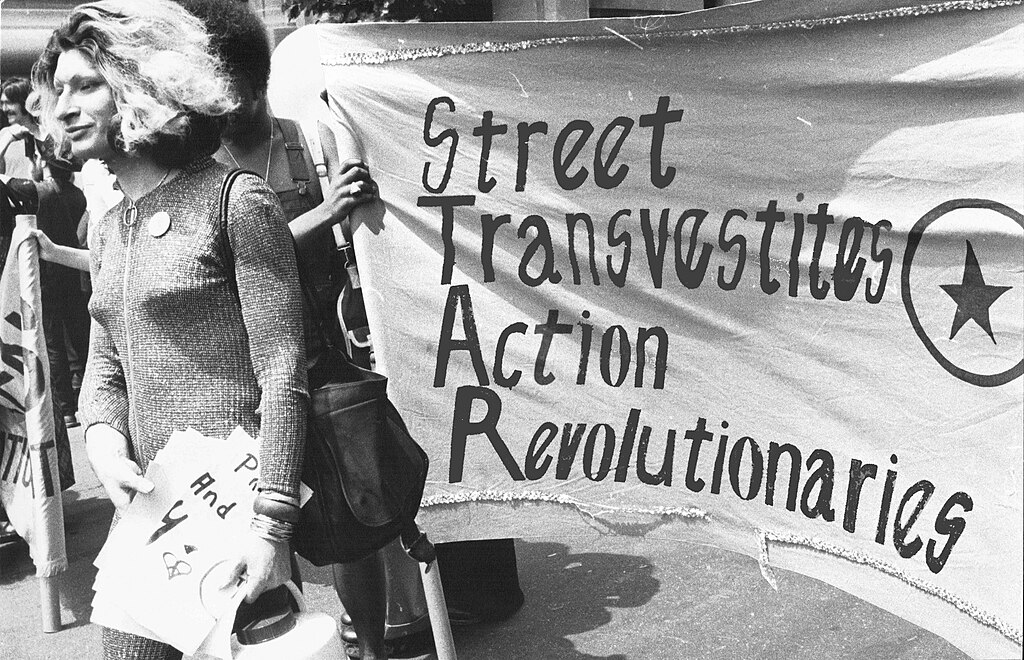
Uprising, not just riots
While “Stonewall Riots” is a common phrase, many prefer “Stonewall Uprising” or “Rebellion.” The term “uprising” captures the political consciousness and collective resistance against systemic oppression, rather than framing the events as mere chaos. This nuance is important: Stonewall wasn’t the first act of LGBTQ+ defiance, but it was a turning point that galvanised a movement.
From Uprising to celebration: the birth of Pride Parades
The first Pride marches
One year after Stonewall, on June 28, 1970, thousands marched from the Stonewall Inn to Central Park in what was called “Christopher Street Liberation Day”—the first Pride parade. Similar marches took place in Chicago, Los Angeles, and San Francisco, marking a new era of visibility and activism.
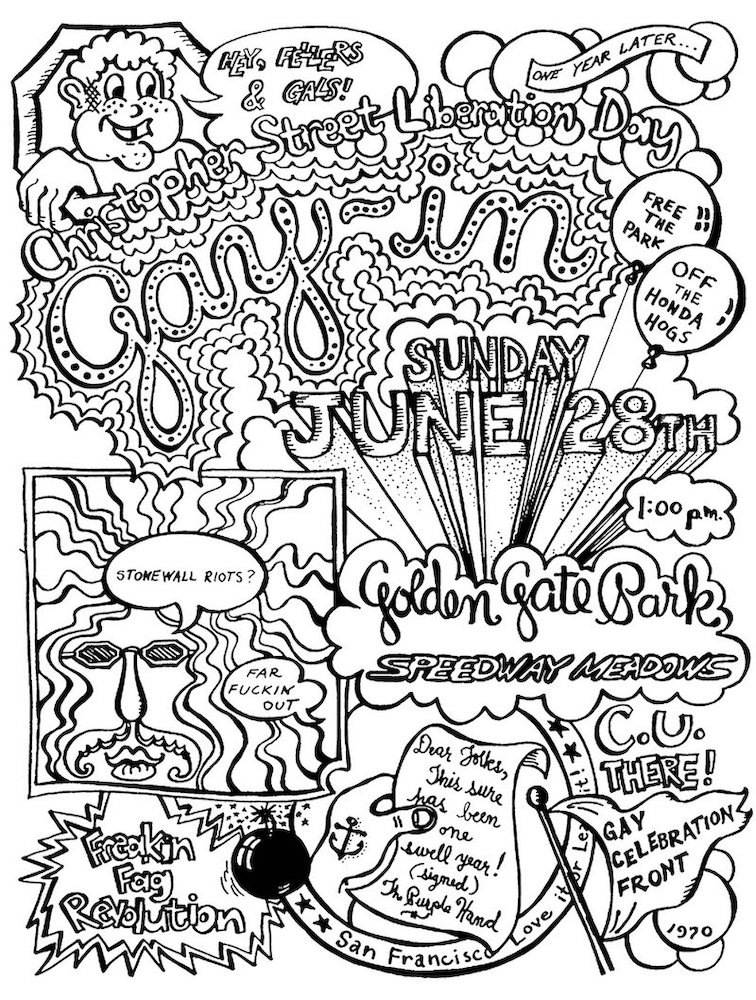
Evolution of Pride Parades
What began as a protest has evolved into a global phenomenon. Pride parades and festivals now take place on every continent (yes, even Antarctica has seen a Pride flag!), blending celebration with activism. These events are more than parties—they are acts of visibility, solidarity, and ongoing protest against discrimination.
Pride Parade history: protest and celebration
Pride parades serve multiple purposes:
- Commemoration: Honouring the courage of those at Stonewall and beyond.
- Visibility: Making LGBTQ+ people seen and heard in societies that often marginalise them.
- Advocacy: Demanding legal and social equality.
- Celebration: Affirming LGBTQ+ identities and culture.
The broader LGBTQ+ rights movement and Pride’s role
Pre-Stonewall activism
The Stonewall Uprising didn’t happen in a vacuum. Earlier groups like the Mattachine Society and the Daughters of Bilitis had been quietly fighting for gay and lesbian rights since the 1950s. These “homophile” movements laid the groundwork for what would become a much broader LGBTQ+ rights movement.
Post-Stonewall momentum
Stonewall supercharged the gay rights movement, inspiring the formation of organisations like the Gay Liberation Front, Human Rights Campaign, and GLAAD (Gay & Lesbian Alliance Against Defamation). The energy of those nights in June 1969 translated into decades of activism, legal challenges, and cultural change.
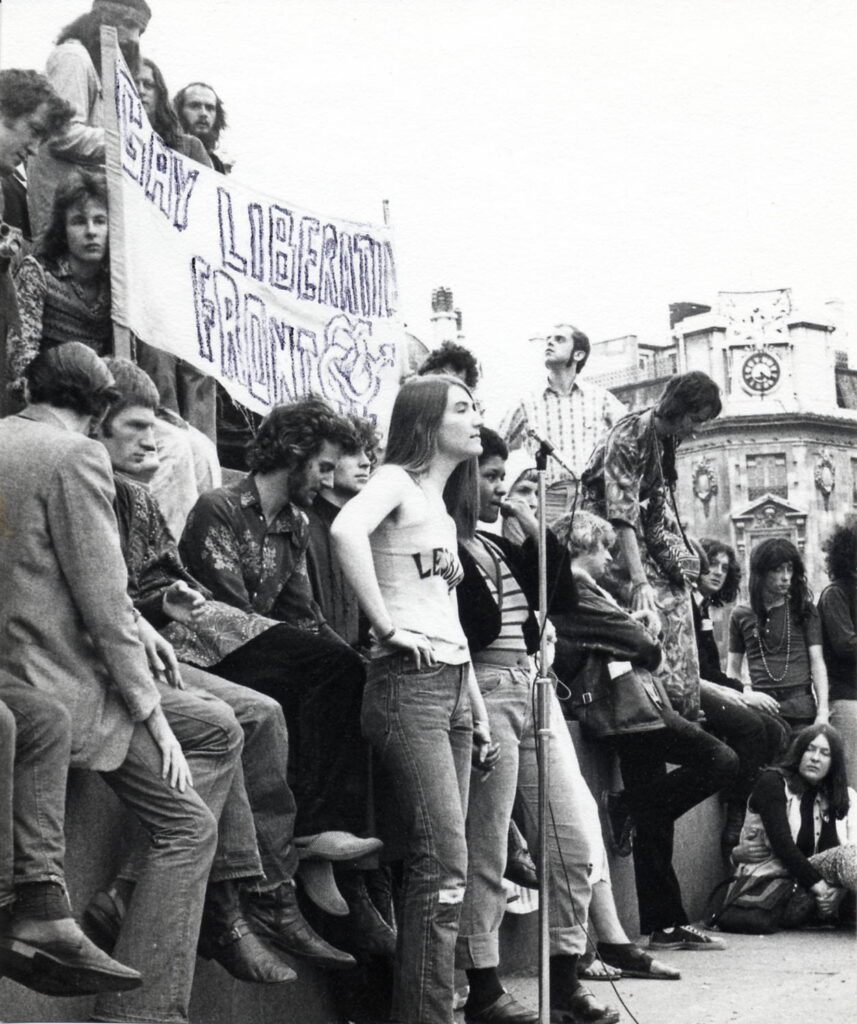
Ongoing struggle
Despite enormous progress—decriminalisation, marriage equality in many countries, anti-discrimination laws—the fight is far from over. Trans rights, healthcare access, and protection from hate crimes remain urgent issues. Pride Month serves as both a celebration of victories and a reminder of the work still to be done.
Key milestones
Without listing every country’s timeline, some broad milestones include:
- Decriminalisation of homosexuality in many nations
- Legalisation of same-sex marriage in over 30 countries
- Growing recognition of non-binary and trans identities
- Increased visibility and representation in media and politics
The symbolism of Pride: flags and terminology
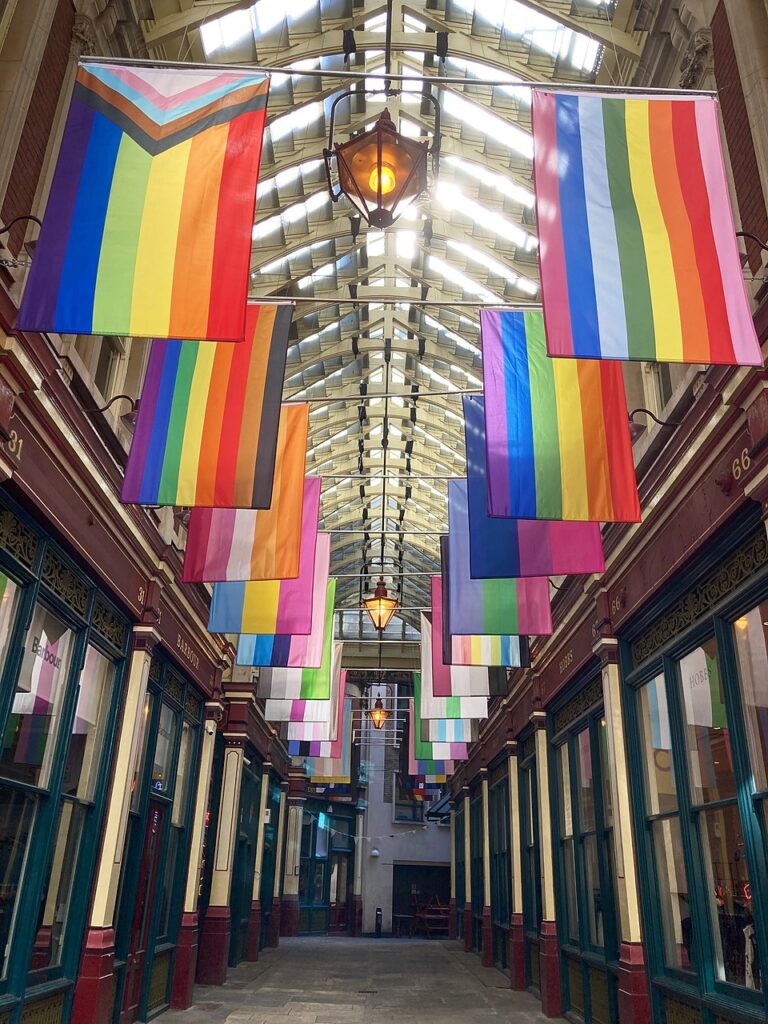
The rainbow flag: a global symbol
In 1978, artist and activist Gilbert Baker designed the first rainbow flag for San Francisco’s Gay Freedom Day Parade, at the request of Harvey Milk, California’s first openly gay elected official. Each colour had a meaning:
| Colour | Meaning |
|---|---|
| Hot pink | Sex |
| Red | Life |
| Orange | Healing |
| Yellow | Sunlight |
| Green | Nature |
| Turquoise | Magic/Art |
| Indigo | Serenity |
| Violet | Spirit |
Due to production issues, the flag was soon reduced to six stripes—red, orange, yellow, green, blue, and violet—the version most recognised today.
Other pride flags
The LGBTQ+ community is beautifully diverse, and so are its flags:
- Transgender Pride Flag: Light blue, pink, and white stripes.
- Bisexual Pride Flag: Pink, purple, and blue.
- Progress Pride Flag: Adds black, brown, and trans stripes for inclusivity.
- Intersex-Inclusive Flag: Features a yellow triangle and purple circle.
- New Progress Pride Flag: It brings together many of the LGBTQ+ flags, representing both the evolving LGBTQ+ community and wider society.
Each flag represents a unique identity within the broader LGBTQ+ spectrum, reflecting the community’s commitment to inclusivity.
Key LGBTQ+ terminology
Understanding respectful language is crucial. Here’s a quick glossary:
- LGBTQIA+: Lesbian, Gay, Bisexual, Transgender, Queer/Questioning, Intersex, Asexual, plus other identities.
- Queer: An umbrella term for people not exclusively heterosexual or cisgender; once a slur, now reclaimed by many.
- Cisgender: Identifying with the gender assigned at birth.
- Transgender: Identifying with a gender different from the one assigned at birth.
- Non-binary: Not exclusively male or female.
- Ally: A non-LGBTQ+ person who supports the community.
- Coming out: The process of revealing one’s LGBTQ+ identity.
How Pride Month is celebrated globally in 2025
Pride Month 2025 is a truly global celebration, with events, parades, and activism spanning continents and cultures. Here’s a taste of how the world is coming together this June:
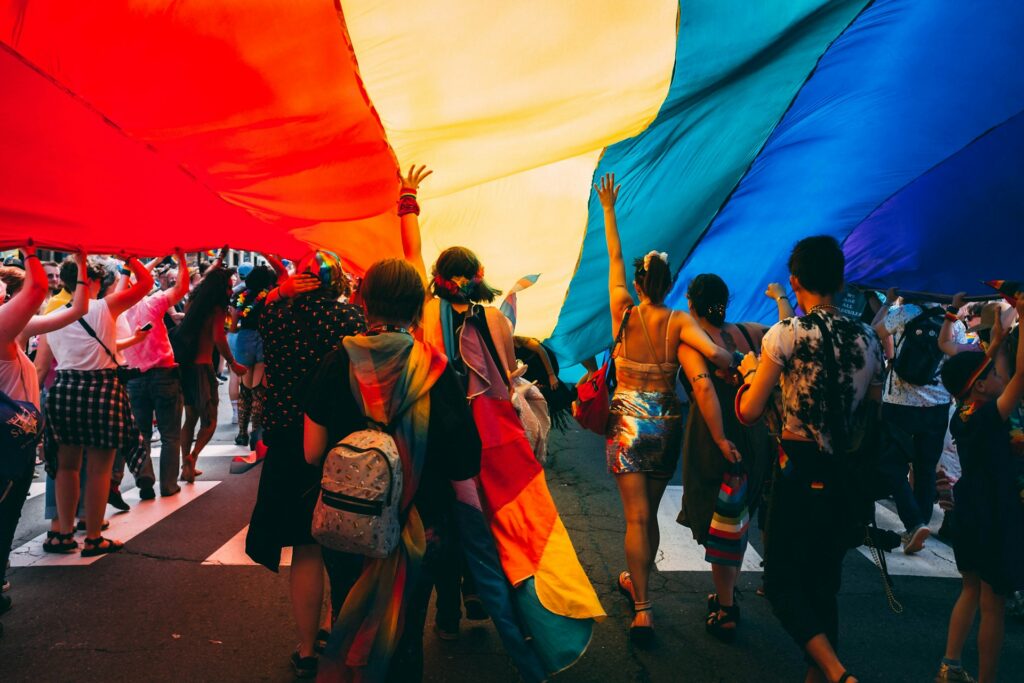
United States: WorldPride in Washington, DC
This year, WorldPride returns to the US for the first time since 2019, with Washington, DC, hosting a three-week extravaganza featuring over 300 events. The programming is intentionally intersectional, spotlighting DC Latinx Pride, API Pride, Trans Pride, DC Black Pride, Youth Pride, and DC Silver Pride for seniors. The message? Resistance, resilience, and hope—especially vital as the community faces legislative challenges and rising anti-LGBTQ+ rhetoric.
United Kingdom: diverse and dazzling
From the iconic London Pride Parade—winding through central London and culminating at Trafalgar Square—to the beachside revelry of Brighton and Hove, the UK’s Pride scene is a patchwork of local colour and national solidarity. Drag queens on buses, queer choirs, family zones, and afterparties in Soho and beyond make these events both joyful and purposeful, with a strong focus on inclusion and intersectionality.
Europe: EuroPride in Lisbon and beyond
Lisbon hosts EuroPride 2025, a pan-European celebration with over 50 events, including concerts, sports, art exhibitions, and a grand parade on June 21. Madrid’s Orgullo festival, Barcelona’s open-air concerts, and Vienna’s Rainbow Parade are just a few highlights of a continent that transforms into a tapestry of rainbow flags and activism each June.
Latin America: São Paulo and beyond
São Paulo, Brazil, continues to host one of the world’s largest Pride parades, drawing millions to Avenida Paulista. The event is both a party and a protest, with a focus on rights, visibility, and the ongoing fight against discrimination.
Asia: Bangkok, Tokyo, and more
Bangkok’s Pride Parade on June 1, 2025, is globally significant, showcasing Thailand’s growing leadership in LGBTQ+ rights in Asia. Japan is seeing increased activism and court cases around marriage equality, with major Pride events in Tokyo and Osaka.
Africa: Cape Town and advocacy
Cape Town Pride remains a beacon for LGBTQ+ rights on the continent, blending celebration with activism in a region where many countries still criminalise same-sex relationships.
Australia: Sydney Mardi Gras
Though held earlier in the year, Sydney Mardi Gras is a world-famous LGBTQ+ festival, blending parade, protest, and party in a dazzling display of inclusivity and pride.
No matter where you are, Pride Month 2025 is about coming together—sometimes in the streets, sometimes online, always in solidarity.
Recent legislative and societal changes in LGBTQ+ rights
2025 has been a year of both progress and setbacks for LGBTQ+ rights worldwide—a reminder that Pride is as much about protest as celebration.
Progress
- Marriage equality: Liechtenstein’s marriage equality law took effect on January 1, 2025, and Greece and Thailand have also made strides in legalising same-sex marriage. Namibia and Dominica have decriminalised gay sex, and Germany and Ecuador have passed self-identification laws for trans people.
- Court rulings: Czechia legalised same-sex civil unions, and India’s Supreme Court is considering petitions against discriminatory blood donation rules.
- EuroPride and WorldPride: These events are not only cultural milestones but also platforms for advocacy and legislative change, with human rights conferences and political engagement woven into their programming.
Setbacks
- Anti-LGBTQ+ legislation: Ghana, Mali, Georgia, and Bulgaria have passed laws further criminalising LGBTQ+ people. In the US, over 900 anti-trans and anti-LGBTQ+ bills are under consideration in 2025, with 109 already passed.
- Violence and discrimination: The number of trans and gender-diverse people murdered globally has surpassed 5,000 since 2008, highlighting the urgent need for protection and advocacy.
- Political Backlash: The return of Donald Trump to the US presidency has brought renewed threats to LGBTQ+ rights, particularly for trans youth and gender-affirming care.
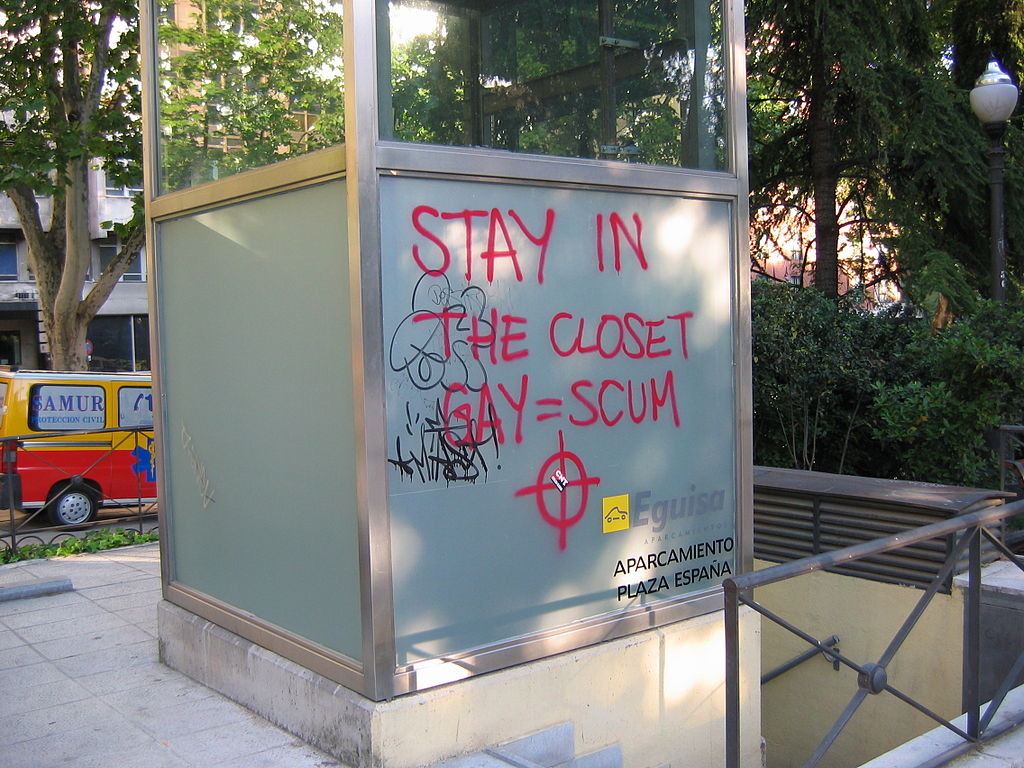
The global picture
While some countries are moving forward, others are doubling down on discrimination. Yet, the spirit of Pride—resistance, resilience, and hope—remains undiminished. Now, more than ever, learning about the history of Pride and supporting LGBTQ+ rights is crucial.
The modern significance of Pride Month
Visibility and representation
Pride Month makes LGBTQ+ people visible in a world that too often erases or marginalises them. Visibility fosters understanding, reduces stigma, and saves lives.
Community building
Pride events create safe spaces where people can be themselves, connect, and find support. For many, it’s the first time they feel seen and accepted.
Education and awareness
Workshops, talks, and campaigns during Pride Month educate the public about LGBTQ+ history, rights, and issues—combating ignorance and prejudice.
Corporate involvement: rainbow washing or real allyship?
In recent years, corporations have embraced Pride—sometimes authentically, sometimes superficially. “Rainbow washing” refers to brands using Pride symbols for profit without supporting LGBTQ+ causes. The community increasingly demands real action: donations, inclusive policies, and year-round support, not just a rainbow logo in June.
Allyship: how to be an effective ally
Allies play a crucial role in advancing LGBTQ+ rights. Effective allyship means:
- Listening and learning
- Speaking up against discrimination
- Supporting LGBTQ+ organisations
- Amplifying LGBTQ+ voices
- Committing to inclusion year-round, not just in June
How to engage with Pride
You don’t need to be LGBTQ+ to celebrate Pride or make a difference. Here’s how anyone can get involved:
- Support LGBTQ+ organisations: Donate, volunteer, or share their work.
- Educate yourself and others: Read books, watch films, and attend talks about LGBTQ+ history and issues.
- Be an active ally: Challenge homophobia and transphobia in your circles.
- Attend local pride events: Parades, festivals, workshops, and more.
- Support LGBTQ+ businesses and Artists: Buy from queer creators and amplify their work.
Learn more about the history of Pride and see how you can support LGBTQ+ rights today.
The impact of Pride Month: societal and individual change
Pride Month’s impact is profound:
- Legal and social progress: Pride has been a catalyst for policy changes and greater acceptance.
- Personal empowerment: For many, Pride is a lifeline—a reminder that they are not alone and that their identity is something to be celebrated, not hidden.
- Cultural shift: From media representation to workplace inclusion, Pride has helped shift cultural attitudes towards greater acceptance and understanding.
FAQ: Frequently Asked Questions about Pride Month
Why do some people oppose Pride Month?
Opposition to Pride Month can stem from a variety of reasons—religious beliefs, discomfort with public displays of sexuality, or resistance to what some see as “identity politics.” Some critics argue that Pride is unnecessary now that many legal rights have been won, or they object to the perceived corporatisation of the movement. However, the continued existence of discrimination, violence, and anti-LGBTQ+ laws globally underscores why Pride remains essential.
How can workplaces support Pride?
Workplaces can support Pride by fostering inclusive environments year-round. This includes:
- Organising listening sessions between LGBTQ+ employees and leadership
- Spotlighting LGBTQ+ employees and allies in internal communications
- Giving employee resource groups (ERGs) visibility and support
- Participating in local Pride events as a company group
- Partnering with LGBTQ+ organisations for fundraising and volunteering
- Providing Pride-themed swag and visible support in the office
Is Pride just for LGBTQ+ people?
Absolutely not! Pride is for everyone who believes in equality, dignity, and love. Allies play a vital role by showing up, speaking out, and supporting the community.
Why do Pride events sometimes face backlash or protest?
As LGBTQ+ visibility increases, so too does resistance from those who feel threatened by social change. This can manifest as protests, hate speech, or even violence. Pride Month is a reminder that progress is never guaranteed and that solidarity is crucial.
How can I be a better ally during Pride Month (and beyond)?
Educate yourself, listen to LGBTQ+ voices, challenge discrimination, and support LGBTQ+ organisations. Remember: being an ally is about action, not just a label.
What are some ways to celebrate Pride if I can’t attend a parade?
You can support LGBTQ+ businesses, donate to charities, educate yourself and others, share supportive messages on social media, or host a Pride-themed event at home or work.
How do Pride events differ around the world?
Pride celebrations are as diverse as the community itself. Some are massive parades (like São Paulo or Madrid), others are smaller, community-focused events, and in some countries, Pride is celebrated quietly or even underground due to legal restrictions. The unifying theme is visibility, solidarity, and the ongoing fight for equality.
Conclusion: a call to continued action
So, why is June Pride Month? Because in June 1969, a group of brave individuals at the Stonewall Inn said “enough” to oppression—and their courage sparked a global movement. Pride Month is a celebration of how far we’ve come, a remembrance of those we’ve lost, and a rallying cry for the work that remains.
Pride isn’t just a month, a parade, or a rainbow flag. It’s a year-round commitment to equality, dignity, and love—for everyone, everywhere. Whether you’re marching in a parade, supporting a friend, or simply learning more, you’re part of this ongoing story.
Learn more about the history of Pride, join the conversation, and see how you can support LGBTQ+ rights today. Happy Pride—this June and every day after.



